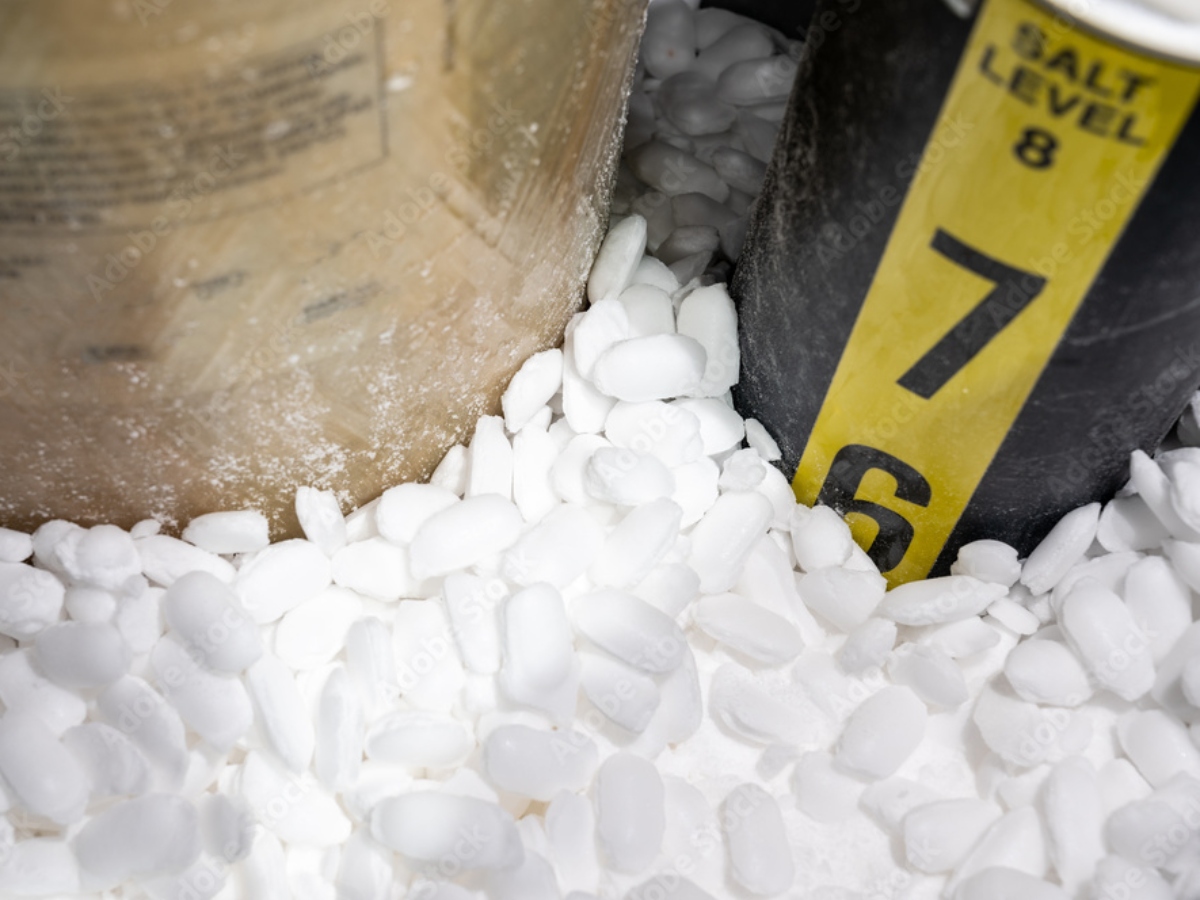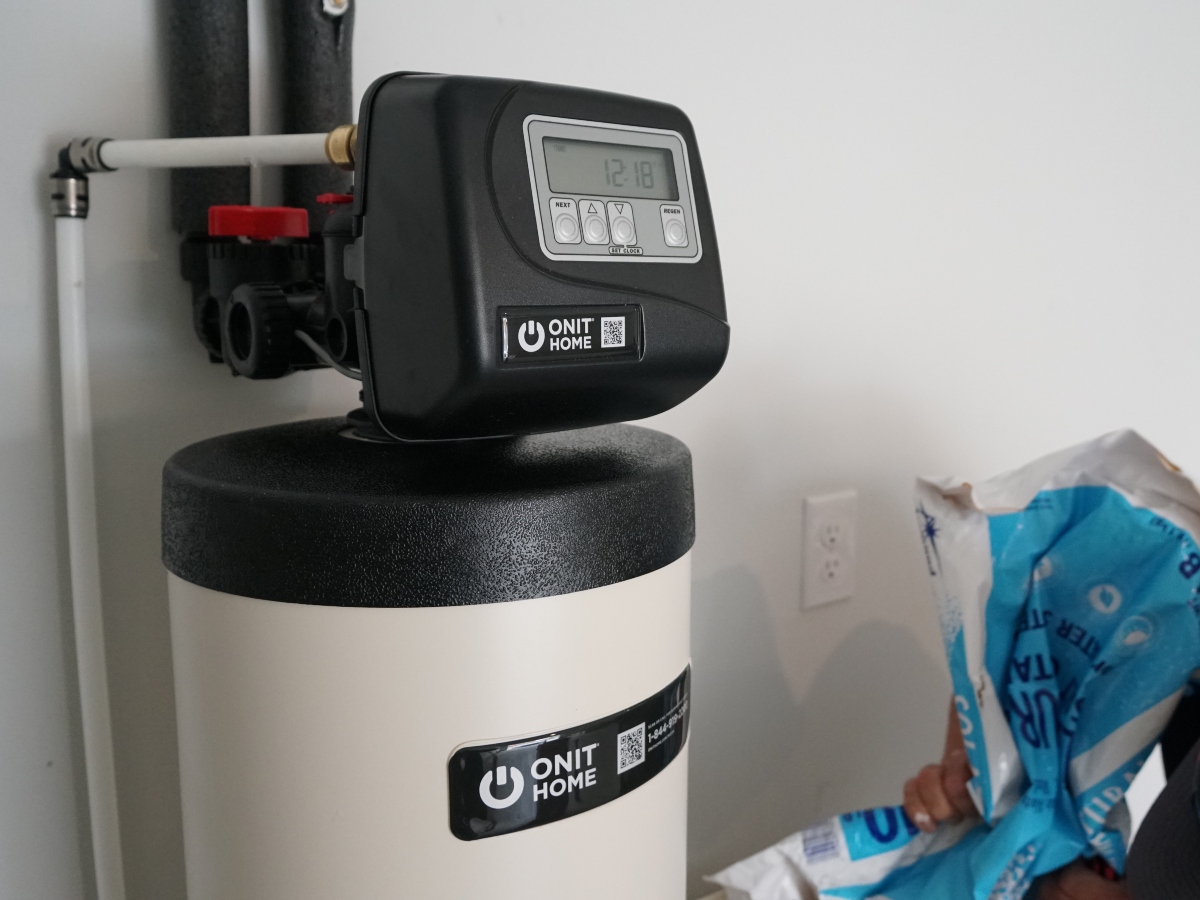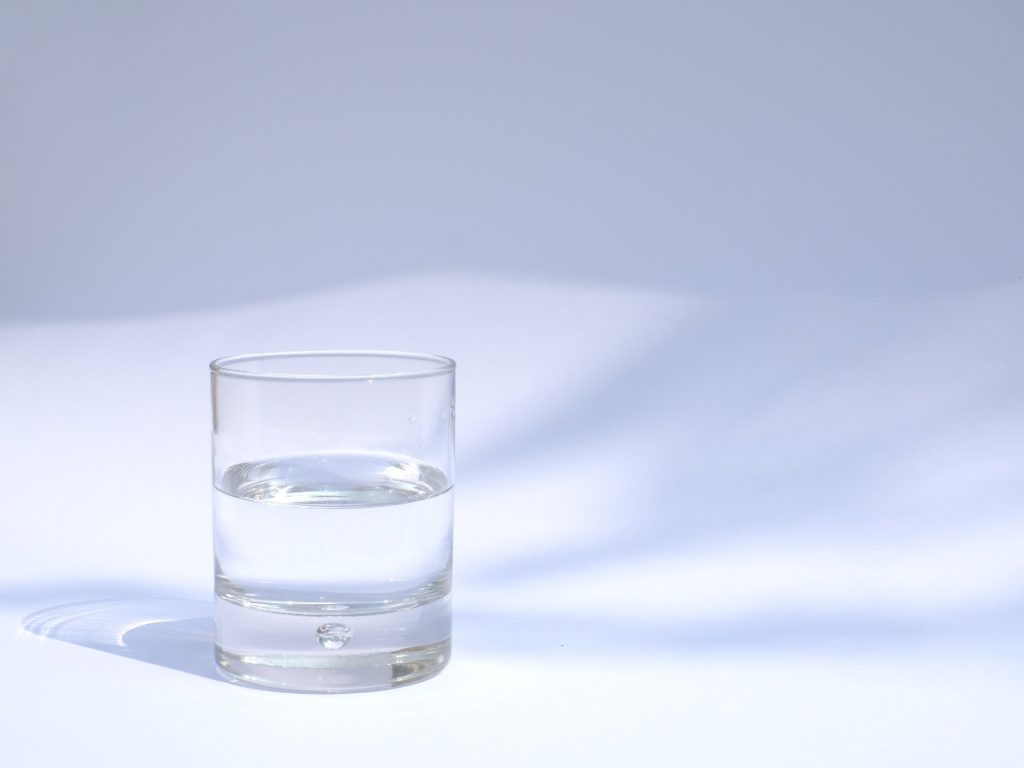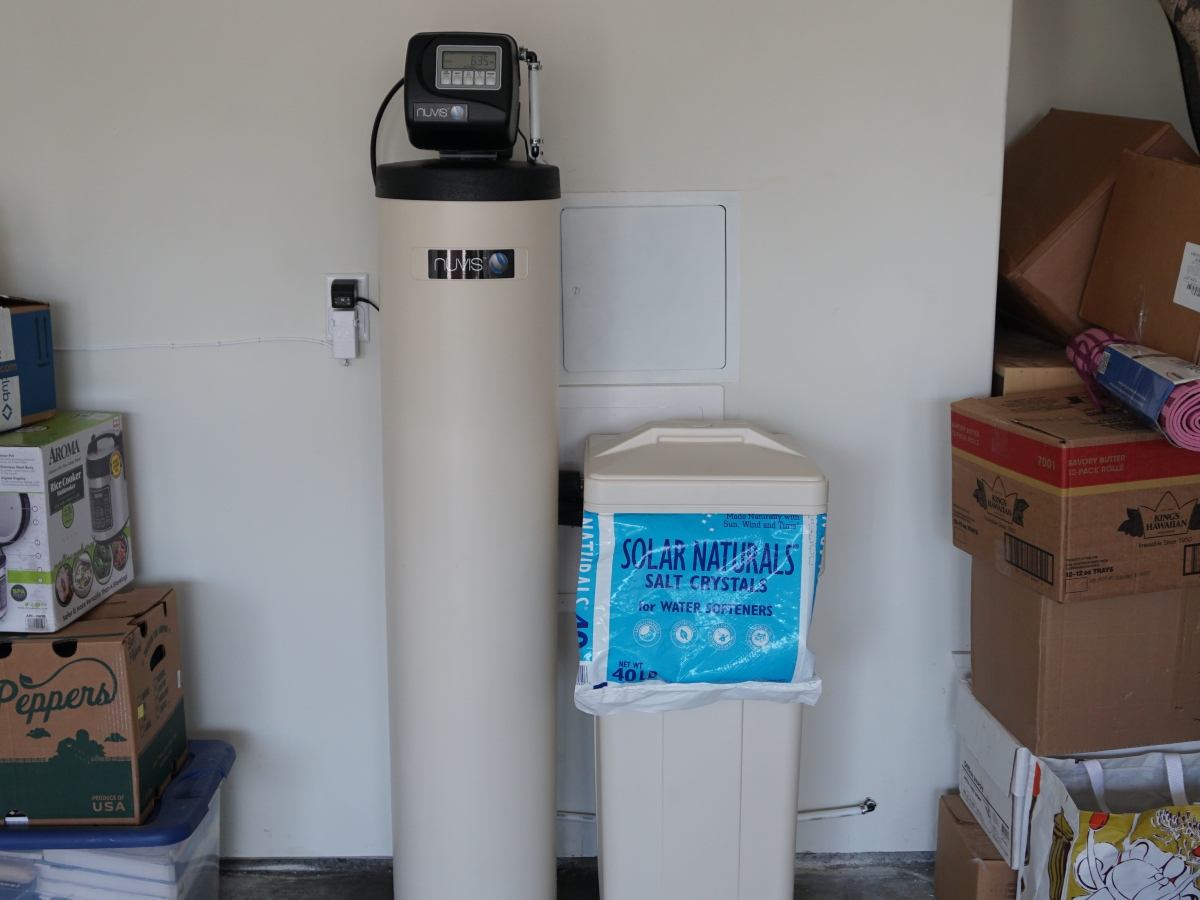Did you know nearly 90% of American households have hard water? While hard water is prevalent in many homes, the Environmental Protection Agency has not set a legal standard since the water does not pose health risks. However, water hardness is considered a nuisance because it can lead to residue buildup in your appliances and piping system, leading to their malfunctioning. Most households use a water softener to make their water soft and prevent the effects of hard water. So how does a water softener work?
A water softener uses a water filtration process known as ion exchange. The process eliminates magnesium and calcium ions by replacing them with sodium or potassium ions.
Let’s delve deeper into the mechanics of this precious appliance so you have a deeper understanding of water softeners.
What Is a Water Softener?
A water softener is a type of filtration system that removes the concentration of dissolved minerals, such as calcium and magnesium, from hard water. Hard water has a high level of mineral content. It can cause dry skin, less soap lathering, scale buildup, and damage to plumbing and appliances.

How Does a Water Softener Work?
Water softener systems use ion exchange resin to remove dissolved minerals from hard water. When hard water enters the softener tank, it flows through resin beads which are negatively charged. The medium attracts the positively charged calcium and magnesium and replaces them with sodium ions. This means the minerals attach to the resin beads, leaving you with soft water. The water enters the distributor tube and flows into the plumbing system for use in your home.
Over time, the resin bed becomes saturated with calcium and magnesium ions, reducing its capacity to remove the minerals from the water. When this happens, the system initiates a regeneration process where a brine solution flushes the resin bed, removing the accumulated minerals. When the dissolved minerals build up on the resin bed, they reduce the system’s efficiency in softening the water. The regeneration process helps rejuvenate the beads, attracting more minerals as they pass through the medium.
How Does the Regeneration Process Work?
A water softener comes with a brine tank for regeneration purposes. Typically, you put water softener salt into the brine tank, and if you have a modern system, it starts the regeneration process automatically. The brine solution flushes the minerals accumulated on the resin bed and is washed down the drain.
Regenerations involve backwashing, brining/ brine draw, and rinsing. Backwashing removes the accumulated sediment and minerals on the resin bed. Brining recharges the resin beds with sodium or potassium ions while rinsing flushes out any brine left in the tank. Mostly, a water softener regenerates once or twice in 14 days, but this depends on several factors, such as tank size, water hardness, and water usage.
What Are the Components of a Water Softener System?
A water softener is made of several components. Understanding the components can help you have a clearer picture so you can have an answer to the “How does a water softener work” question. It can also help you maintain the system well. The main components of a water system include:
Mineral Tank
The mineral tank is also called the resin or exchange tank. This is where the softening process takes place. A mineral tank is the heart of a water-softening system. It contains rising beads covered with sodium or potassium ions. A resin tank also contains a distributor/riser tube. The tube carries softened water into your home. It’s at the center of the tank and has a basket at the bottom to keep resin out.
Control Valve
Also referred to as the head valve, the control valve regulates the operations of the water softener. A control valve is located at the top of the mineral tank and controls the water flowing in and out of the softener. The valve also monitors water usage and starts regeneration cycles. Modern control valves come with advanced programming capabilities to ensure customization and efficiency.
Brine Tank
A brine tank stores the brine solution the water softener uses for regeneration. It holds the water softener salt, forming a brine solution when mixed with water. A brine tank is separate from the mineral tank in larger water softener systems, while smaller systems have the two tanks in one cabinet.
Other essential components of water softer include:
- Resin bed: A resin bed is found inside a mineral tank and consists of tiny resin beads usually made from polystyrene plastic. The beads have a negative charge, which attracts positively charged minerals that are present in the water.
- Brine valve: A brine valve controls the brine flow into the mineral tank during regeneration, preventing excessive brine draw or overfill.
- Bypass valve: A bypass valve is connected to a control valve. It helps stop water flow into the water softener and allows you to direct it into the plumbing system. The valve can also help you troubleshoot water pressure problems. A bypass valve is useful during repairs, maintenance, or when you want to use the water without softening it, like when you want to water the garden.
- Brine injector: A brine injector or eductor is responsible for drawing the brine solution from the brine tank and injecting it into the resin tank during regeneration.

Benefits of Water Softeners
Many benefits are associated with using water softeners in residential or commercial settings. Here are some common advantages:
Increasing Your Appliances’ Lifetime
Hard water causes scale buildup in your plumbing system and appliances, such as the washing machine, dishwasher, water heater, and coffeemaker. Over time, this buildup reduces the efficiency and performance of the appliance, which might require costly repairs or replacements. A water softener prevents mineral buildup, maintaining appliances’ efficiency and extending lifespan.
Reduction of Soap and Water Usage
A high concentration of calcium and magnesium prevents soap from lathering properly, meaning you will require more soap when cleaning. The minerals also create a film in the water that is difficult to remove and can leave streaks and residue. This means you will need more water for rinsing. A water softener eliminates the minerals, leaving you with soft water that is easy to lather and rinse, reducing detergents and water usage.
Improved Skin and Hair Texture
Hard water can leave a residue on your skin, making your skin dry and itchy over time. It can also lead to flaky and dull hair. A water softener can help return your skin and hair’s shine and luster.
Maintains the Aesthetics of Your Glassware
Hard water leaves behind mineral deposits on glass surfaces such as drinking glasses, shower doors, and windows. It also leaves stains on sinks and tubs. Furthermore, hard water causes your clothes to fade, makes them stiff, and causes them to wear out faster than clothes washed in soft water. A water softener helps maintain the crystal clear look of your glass surfaces, the appearance of your bathtubs and sinks, and the bright colors on your clothes.
How to Ensure Your Water Softener Works Properly
Ensuring your water softener works properly is crucial as it maintains the quality of your water. A malfunctioning water softener leads to hard water problems. Here are some tips to keep your water softener in tip-top shape:
- Use the right type of water softening salt: It’s important to follow your manufacturer’s recommendation of the type of salt to use on your water softener. The three salts available in the market are rock salt, solar salt, and evaporated salt. In addition, ensure to add the correct number of bags to maintain optimal salt level.
- Routine maintenance: Regularly inspecting your system can help you catch any signs of damage or malfunctioning early. Maintain a checkup schedule to check and replenish salt and inspect the system for any leakages that may cause costly damages.
- Water hardness testing: Testing your water for hardness helps you determine the effectiveness of your water softener at removing minerals that causes water hardness.
- Hiring a professional for installation and repairs: You might need a professional installer to help you install the system. This is to ensure that the system will operate properly and avoid damage. Furthermore, seek the assistance of an expert if your system needs repairs. Professionals have the expertise and experience to diagnose and resolve problems efficiently.

Frequently Asked Questions (FAQs)
Below are some frequently asked questions:
Can I Install a Water Softener by Myself?
A water softener installation requires precise knowledge and skills to ensure it works properly and you avoid damage. That’s why you need a professional to install it if you do not know how to do it yourself.
Can a Water Softener Remove Other Contaminants From My Water?
No. A water softener only removes water hardness and does not remove other water contaminants present in your water. Conducting a water test to ensure your water is clean for drinking is important. If you find the water has contaminants, installing a whole home water filtration system is crucial, even if you have a water softener. A water filtration system keeps you and your family safe by eliminating disease-causing contaminants.
How Long Does a Water Softener Last?
A water softener can last around 10–15 years or more. However, this depends on factors such as maintenance, system quality, usage patterns, and water hardness level.
Get Clean Water With ONIT Home
We hope our article on “How does a water softener work?” has given you a better understanding of water softener systems. A water softener uses an ion exchange method to replace dissolved minerals with sodium or potassium ions, leaving you with soft water. If you’re considering buying a water softener, ONIT Home is your trusted partner. Our professionals have a vast knowledge of water softeners and their installation process. We also deal with water filtration systems such as reverse osmosis and ultraviolet (UV) filtration systems, among others.
Call us now at 1-833-433-0331 for any inquiries or book free water testing to know the quality of your water. Need clean water? We’re ONIT!



